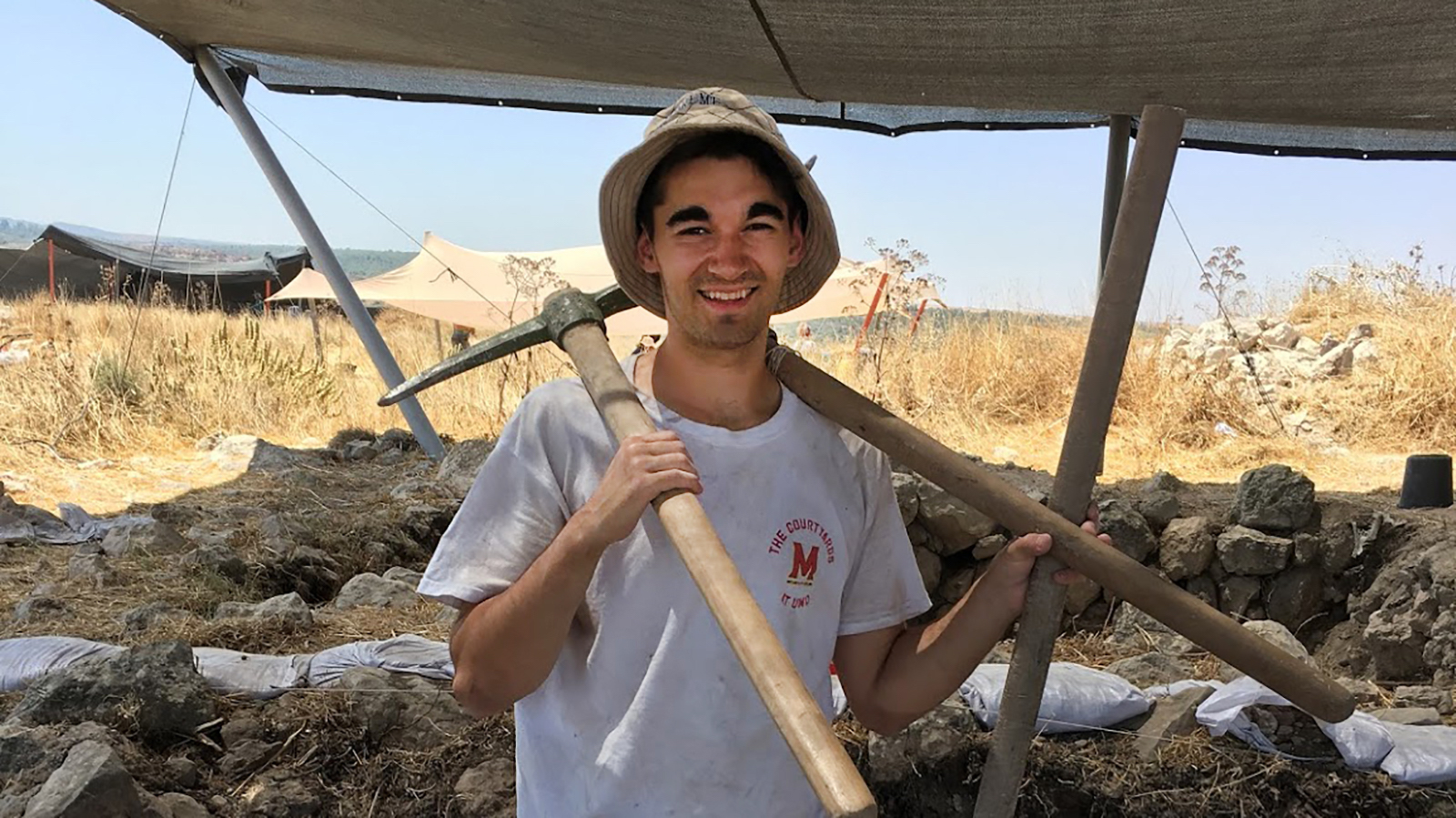Engineering New Opportunities
December 17, 2021

Andreas Osiander ’21 is finding creative ways to blend his majors in art history and engineering to make an impact on the arts.
By Jessica Weiss ’05
When engineering student Andreas Osiander ’21 decided sophomore year to add a major in art history, he didn’t foresee being able to combine the two seemingly disparate disciplines.
But to his delight, Osiander, who graduates next week, has found a number of creative ways to blend his majors. He will soon begin his career as a mechanical engineer, working closely with museums, galleries and other cultural institutions to update their interior systems.
“What I've learned in both of my majors has come together surprisingly well and I'm very grateful for my decision,” Osiander said.
The son of an artist mom and a scientist dad, both immigrants from Germany, Osiander grew up in Columbia, Maryland, with an interest in both. But thanks to a love of cars, Legos and “figuring out how stuff works,” he drifted more towards engineering and knew he wanted to declare that as his major at UMD.
After an art history general education course his first semester freshman year proved a wonderful experience, he took another the following semester.
“I just fell in love with it,” he said. “And after that second course I realized I didn’t want to stop taking these classes. I added the minor, and then I changed to a double major.”
Osiander describes going to art history class as “a warm hug.” While he valued the logical problem solving skills needed to complete his engineering assignments, he also enjoyed having the space to ask “big questions about the why or how” in art history courses. And he found the two majors surprisingly complementary.
“As engineers, I think the most important thing is relating our work back to humanity—always seeing how it’s impacting people,” he said. “In art history you get to read and ask insightful questions about the world. And that way of thinking really applies well when designing systems and solving problems in engineering.”
In 2019, while taking “Introduction to Archaeology," Osiander was awarded a scholarship by the Biblical Archaeology Society to travel to Israel for two weeks to volunteer at the Tel Bruna Archaeological Excavation Project with his professor Matthew Suriano, associate professor in the Joseph and Rebecca Meyerhoff Program and Center for Jewish Studies. Tel Burna was a border between the kingdoms of Judah and Philistia in the Iron Age. Osiander was eager to explore if his skills as a mechanical engineer could benefit an archeological site, in this case a section focused on exposing the outer fortification wall. Once on the site, he found that he could play a role in analyzing excavation equipment and methods and brainstorming ways to make the work safer and more efficient.
He especially enjoyed working with 3D models. At the end of every day, the team took extensive photographs and compiled them into detailed 3D models to closely examine the site and its features.
“This hit me close, because as an engineer, I frequently work with modeling and have experience using a similar process of 3D scanning,” he wrote in a blog about the experience. “This showed me that there is a place for an engineer in the archaeological world. I left the site feeling even more inspired to get involved in this field and use my knowledge and passion to contribute to its innovation.”
The experience also largely inspired the idea for his engineering senior design capstone project, a protective crate for archaeologists to transport artifacts away from their excavation site, which he and his team called “The Diamondback Crate.” The design’s objective was to ensure an artifact’s safety during transportation, through stabilizing the internal environment, eliminating any external impact forces and measuring the conditions of the artifact.
As part of the research for the project, Osiander interviewed Quint Gregory, a former art courier and the director of the Michelle Smith Collaboratory for Visual Culture, a learning space in the Department of Art History and Archaeology.
He’ll soon begin a job as a mechanical engineer at Mueller Associates, a mechanical, electrical and plumbing engineering firm based in Baltimore which specializes in cultural, educational, corporate and government spaces, such as the Smithsonian Institution, the Phillips Collection and the Folger Shakespeare Library. His first project will be at the Hirshhorn Museum and Sculpture Garden, the Smithsonian’s national museum of modern and contemporary art.
Down the line, Osiander hopes to open his own art conservation lab that specializes in handling, protecting and preserving artifacts and paintings.
“Designing systems, researching, innovating in the field—I think that’s a way I could have a direct impact on the arts and utilize all my engineering knowledge,” he said.
ARHU students can benefit from “Be Worldwise. Get Worldready.,” a career initiative that blends new and reimagined course offerings, integrated academic and career advising and access to internships, alumni networking and other opportunities across the region. Learn more.
Photo courtesy of Andreas Osiander.

